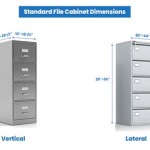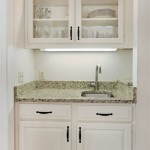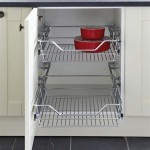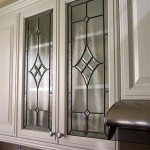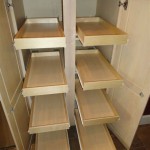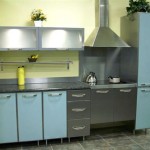How To Remove Sliding Doors From Cabinets
Sliding doors on cabinets offer an aesthetic appeal and space-saving functionality. However, situations arise where removal becomes necessary. These situations may include repair work on the door itself, cabinet maintenance, or modification of the cabinet's interior or exterior. Understanding the proper procedure for removing sliding doors from cabinets ensures safety and minimizes the risk of damage to the doors, cabinet frame, or surrounding area. This guide provides a detailed, step-by-step process for the safe and effective removal of most standard sliding cabinet doors.
Prior to initiating the removal process, it is crucial to gather the appropriate tools. Having the correct tools readily available streamlines the process and minimizes the chances of improvisation, which can potentially lead to damage. The essential tools include a Phillips head screwdriver, a flathead screwdriver, a pair of work gloves for hand protection, and a soft cloth or blanket to protect the doors from scratches once removed. Depending on the specific cabinet design, a drill with various bits might also be required.
Careful observation of the door and its track system is paramount. Different manufacturers employ various mechanisms for securing sliding doors. Some systems utilize rollers that clip into the track, while others rely on tension or spring-loaded mechanisms. Before attempting to force any components, a thorough examination will reveal the specific type of fastening used. This initial assessment will dictate the subsequent steps and prevent unnecessary force or damage.
Identifying the Door Mounting System
A critical step involves determining the specific type of mechanism used to secure the sliding doors to the cabinet. Cabinet manufacturers employ various methods, broadly categorized into roller systems, track systems with tension mechanisms, and systems utilizing spring-loaded catches. Each system requires a specific approach for safe removal. Failure to accurately identify the mounting system can lead to improper techniques, potentially resulting in damage to the door, tracks, or cabinet frame.
Roller systems are among the most common. These systems feature small wheels or rollers attached to the top or bottom of the door, which then ride within a corresponding track. Removal often involves lifting the door slightly to disengage the rollers from the track. The location and mechanism for releasing these rollers can vary. Some rollers have a small tab that needs to be depressed, while others simply require the door to be lifted high enough to clear the track. The tracks themselves might be made of plastic, metal, or a combination of both.
Track systems with tension mechanisms often rely on the inherent flexibility of the door or track to maintain the door's position. These systems may utilize a tight fit between the door and the track, requiring the door to be carefully flexed or angled to release it. Applying excessive force to these systems can result in cracking or bending the track or the door itself. Careful manipulation and controlled pressure are essential for successful removal.
Spring-loaded catches are less common but require a different approach altogether. These systems use small, spring-loaded plungers to hold the door in place. These plungers are typically located at the top or bottom of the door and retract when the door is pushed or pulled in a specific direction. Identifying the location of these plungers and understanding the direction of movement required to release them is crucial for avoiding damage. A small screwdriver may be necessary to depress the plungers and release the door.
Once the mounting system has been accurately identified, the appropriate removal technique can be selected. This selection ensures that the removal process is both safe and effective, minimizing the risk of damage to any of the components.
Removing Sliding Doors: A Step-by-Step Guide
With the proper tools gathered and the door mounting system identified, the actual removal process can begin. This process is generally straightforward, but attention to detail is crucial. Rushing through the steps or applying excessive force can easily result in damage.
The first step involves creating a safe working environment. This includes ensuring adequate lighting and clearing any obstructions around the cabinet. Place the protective cloth or blanket on the floor near the cabinet. This provides a cushioned surface to prevent scratches or damage to the doors once they are removed. Having a clear and protected space is essential for preventing accidental damage during the removal process.
For roller systems, the typical procedure involves lifting the door slightly to disengage the rollers from the track. This might require some maneuvering to find the optimal angle. Once the rollers are clear of the track, the door should be carefully tilted outward and removed. The door should then be placed gently onto the protective cloth or blanket. If the rollers are adjustable, it may be necessary to loosen or tighten them to facilitate easier removal. The adjustment screws are usually located on the side or top of the rollers.
For track systems with tension mechanisms, the removal process involves carefully flexing or angling the door to release the tension. This may require gentle but firm pressure. Avoid applying excessive force, as this can crack or bend the track or door. If the door is particularly tight, consider using a thin, flexible tool, such as a plastic putty knife, to gently pry the door away from the track. Work slowly and methodically, applying even pressure to avoid stressing any particular area.
For systems utilizing spring-loaded catches, locate the plungers and determine the direction of movement required to release them. A small screwdriver may be necessary to depress the plungers. Once the plungers are depressed, the door should be able to slide freely out of the track. Maintaining pressure on the plungers while sliding the door is crucial to prevent them from re-engaging. Support the door with both hands to prevent it from falling once it is released.
After removing the first door, repeat the process for the remaining doors. Remember to take note of the order in which the doors were removed, as this will be helpful during reinstallation. Labeling the doors with a piece of tape indicating their original position can also be beneficial.
Post-Removal Inspection and Maintenance
Once the sliding doors have been successfully removed, it is an opportune time to inspect the tracks and rollers for any signs of wear or damage. Addressing these issues now can prevent future problems and ensure the smooth operation of the doors upon reinstallation. This inspection should include a thorough cleaning of the tracks to remove any accumulated dust, debris, or grease.
Inspect the tracks for any cracks, bends, or deformations. Damaged tracks can impede the movement of the rollers and cause the doors to stick or bind. If any damage is detected, the tracks should be repaired or replaced. Minor bends can sometimes be straightened using pliers, but severely damaged tracks will require replacement.
Examine the rollers for wear and tear. Look for cracks, chips, or flat spots on the rolling surface. Also, check for any looseness or play in the roller assembly. Worn or damaged rollers can prevent the doors from sliding smoothly and can also damage the tracks. Replacing worn rollers is a relatively inexpensive repair that can significantly improve the performance of the sliding doors.
Clean the tracks thoroughly using a vacuum cleaner with a brush attachment to remove loose debris. Then, use a damp cloth and a mild detergent to wipe down the tracks, removing any remaining dirt or grease. Ensure that the tracks are completely dry before applying any lubricant. Lubricating the tracks with a silicone-based lubricant can further improve the sliding action of the doors. Avoid using oil-based lubricants, as these can attract dust and debris, eventually leading to a build-up that impedes movement.
Finally, inspect the doors themselves for any damage, such as scratches, dents, or cracks. Addressing these issues before reinstallation will ensure that the doors look their best and function properly. Clean the doors with a mild soap and water solution, and dry them thoroughly. Minor scratches can often be buffed out with a polishing compound. More significant damage may require professional repair.
By taking the time to inspect and maintain the tracks, rollers, and doors after removal, one can ensure the long-term functionality and aesthetic appeal of the sliding cabinet doors. This proactive approach minimizes the likelihood of future problems and prolongs the lifespan of the entire system.

How To Remove Glass From Antique China Cabinets Salvaged Inspirations

How To Easily Remove Sliding Closet Doors Expert Steps

How Do I Unstick A Glass Sliding Curio Cabinet Door Hometalk

How To Remove A Closet Door

How To Easily Remove Sliding Closet Doors Expert Steps

Built In Wardrobe Removal Removing Sliding Closet Doors From Tracks

8 Tips For Perfect Sliding Doors Without Hardware

Make The Most Of Your Closet Replace Sliding Doors With Standard

How To Remove Glass From Antique China Cabinets Salvaged Inspirations

Sliding Cabinet Doors With Inset Track And Glides Sawdust Girl
Related Posts

